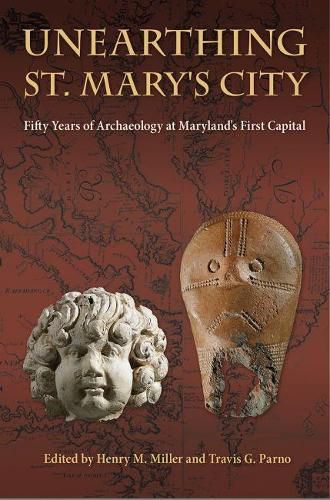Readings Newsletter
Become a Readings Member to make your shopping experience even easier.
Sign in or sign up for free!
You’re not far away from qualifying for FREE standard shipping within Australia
You’ve qualified for FREE standard shipping within Australia
The cart is loading…






This title is printed to order. This book may have been self-published. If so, we cannot guarantee the quality of the content. In the main most books will have gone through the editing process however some may not. We therefore suggest that you be aware of this before ordering this book. If in doubt check either the author or publisher’s details as we are unable to accept any returns unless they are faulty. Please contact us if you have any questions.
This volume summarizes the remarkably diverse archaeological discoveries made during the past half century of investigations at the site of St. Mary’s City, the first capital of Maryland and one of the earliest European settlements in America. Founded in 1634, the city had disappeared by 1750, yet the archaeology documented in Unearthing St. Mary’s City reveals its untold history.Contributors to this volume review new research approaches and methods developed recently at Historic St. Mary’s City. They study the archaeology, architecture, and people of the lively seventeenth-century colonial hub. They also explore the landscapes of agriculture, enslavement, and remembrance that developed at the site in the centuries after the capital’s relocation to Annapolis. In their chapters, contributors delve into subjects such as soil analysis, ceramics, diet, forts, burials, plantations, state houses, tenants, tobacco pipes, gaming, and the education of women.
The lands along the Chesapeake Bay have witnessed a vast range of human experiences, and this book highlights the lives of peoples of European, Native American, and African origins who lived on this site over a span of four centuries. Their stories illuminate the multilayered nature of this important place and the broader Chesapeake region and serve as a testament to the potential and power of historical archaeology.
$9.00 standard shipping within Australia
FREE standard shipping within Australia for orders over $100.00
Express & International shipping calculated at checkout
This title is printed to order. This book may have been self-published. If so, we cannot guarantee the quality of the content. In the main most books will have gone through the editing process however some may not. We therefore suggest that you be aware of this before ordering this book. If in doubt check either the author or publisher’s details as we are unable to accept any returns unless they are faulty. Please contact us if you have any questions.
This volume summarizes the remarkably diverse archaeological discoveries made during the past half century of investigations at the site of St. Mary’s City, the first capital of Maryland and one of the earliest European settlements in America. Founded in 1634, the city had disappeared by 1750, yet the archaeology documented in Unearthing St. Mary’s City reveals its untold history.Contributors to this volume review new research approaches and methods developed recently at Historic St. Mary’s City. They study the archaeology, architecture, and people of the lively seventeenth-century colonial hub. They also explore the landscapes of agriculture, enslavement, and remembrance that developed at the site in the centuries after the capital’s relocation to Annapolis. In their chapters, contributors delve into subjects such as soil analysis, ceramics, diet, forts, burials, plantations, state houses, tenants, tobacco pipes, gaming, and the education of women.
The lands along the Chesapeake Bay have witnessed a vast range of human experiences, and this book highlights the lives of peoples of European, Native American, and African origins who lived on this site over a span of four centuries. Their stories illuminate the multilayered nature of this important place and the broader Chesapeake region and serve as a testament to the potential and power of historical archaeology.